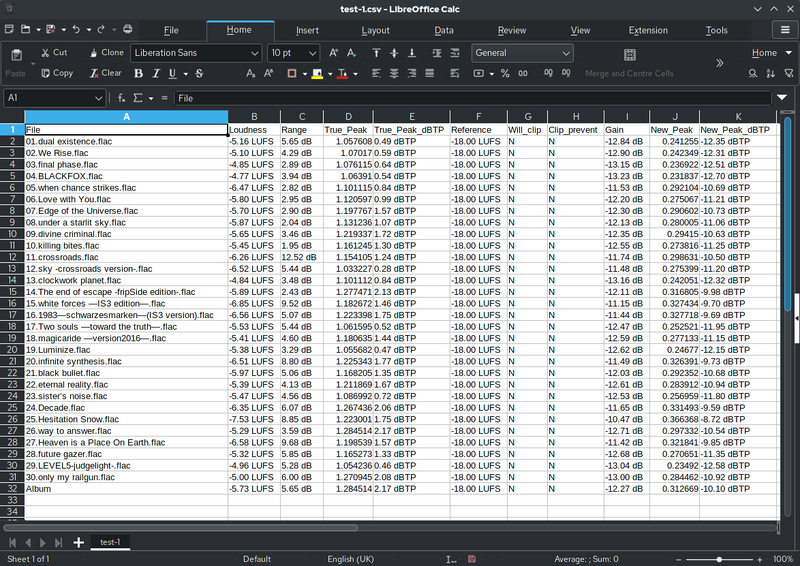Indicators on Excel Links Not Working You Need To Know
Wiki Article
Fascination About Excel Links Not Working
Table of ContentsThe Basic Principles Of Excel Links Not Working The Of Excel Links Not WorkingSee This Report on Excel Links Not WorkingSome Known Facts About Excel Links Not Working.Things about Excel Links Not Working

However, selection computation functions like either can not handle entire column referrals or determine all the cells in the column. User-defined functions don't automatically acknowledge the last-used row in the column and, as a result, regularly compute entire column references inefficiently. It is simple to program user-defined features so that they acknowledge the last-used row.

The Only Guide to Excel Links Not Working
Making use of the formula for a vibrant variety is usually more effective to the formula since has the negative aspect of being an unstable feature that will be calculated at every recalculation. Efficiency lowers because the function inside the dynamic range formula should analyze many rows. You can minimize this performance decline by saving the part of the formula in a separate cell or specified name, and after that referring to the cell or name in the vibrant range: Counts!z1=COUNTA(Sheet1!$A:$A) Offset, Dynamic, Range=OFFSET(Sheet1!$A$ 1,0,0, Counts!$Z$ 1,1) Index, Dynamic, Variety=Sheet1!$A$ 1: INDEX(Sheet1!$A:$A, Counts!$Z$ 1+ROW(Sheet1!$A$ 1) - 1,1) You can also use features such as to create vibrant ranges, yet is unstable and also constantly computes single-threaded.
Using multiple vibrant varieties within a solitary column needs special-purpose counting functions. Making use of numerous vibrant ranges can reduce efficiency. In Workplace 365 variation 1809 and also later on, Excel's VLOOKUP, HLOOKUP, and also MATCH for precise suit on unsorted information is much faster than ever when searching for multiple columns (or rows with HLOOKUP) from the very same table range.
There are lots of methods of boosting lookup estimation time. If you utilize the specific match alternative, the estimation time for the function is symmetrical to the variety of cells scanned prior to a suit is located. For lookups over big arrays, this time can be significant. Lookup time see this site making use of the approximate suit options of,, as well as on sorted information is fast as well as is not dramatically boosted by the size of the range you are seeking out.
The Of Excel Links Not Working
Guarantee that you understand the match-type and also range-lookup choices in,, and also. The adhering to code instance reveals the phrase structure for the function. To learn more, see the Match approach of the Worksheet, Feature object. MATCH(lookup worth, lookup variety, matchtype) returns the biggest match much less than or equal to the lookup worth when the lookup array is arranged rising (approximate suit) (excel links not working).The default choice is approximate suit arranged rising. The complying with code example shows the phrase structure for the and also functions.
VLOOKUP(lookup worth, table range, col index num, range-lookup) HLOOKUP(lookup worth, table variety, row index num, range-lookup) returns the largest suit less than or equivalent to the lookup worth (approximate suit). Table array should be arranged rising.
Excel Links Not Working Fundamentals Explained
If your data is arranged, yet you want a specific suit, see Usage 2 lookups for sorted information with missing worths. Try making use of the and also functions rather of. Is slightly quicker (approximately 5 percent quicker), less complex, and also uses much less memory than a combination of as well as, or, the added versatility that as well as offer frequently enables you to browse around here considerably conserve time.
The feature is fast as well as is a non-volatile function, which speeds up recalculation. The feature is likewise quickly; however, it is an unpredictable feature, and also it sometimes significantly raises the time taken to refine the computation chain.$A$ 2:$F$ 1000, MATCH(A1,$A$ 1:$A$ 1000,0),3) Since exact suit lookups can be slow, take into consideration the complying with alternatives for boosting performance: Use one worksheet.
When you can, the data initially (is fast), and also make use of approximate match. When you must utilize visit site an exact match lookup, limit the array of cells to be checked to a minimum. Use tables and structured references or dynamic array names as opposed to describing a a great deal of rows or columns.
The Definitive Guide to Excel Links Not Working
2 approximate suits are substantially faster than one specific suit for a lookup over even more than a few rows. (The breakeven factor has to do with 10-20 rows.) If you can sort your data yet still can not use approximate suit since you can not make sure that the worth you are seeking out exists in the lookup range, you can utilize this formula: IF(VLOOKUP(lookup_val, lookup_array,1, Real)=lookup_val, _ VLOOKUP(lookup_val, lookup_array, column, Real), "notexist") The very first part of the formula works by doing an approximate lookup on the lookup column itself.VLOOKUP(lookup_val, lookup_array, column, True) If the answer from the lookup column did not match the lookup value, you have an absent worth, and also the formula returns "notexist". Know that if you search for a worth smaller sized than the smallest value in the list, you receive a mistake. You can handle this error by utilizing, or by including a small test value to the listing.
Starting with Excel 2007, you can use the function, which is both easy and fast. IF IFERROR(VLOOKUP(lookupval, table, 2 FALSE),0) In earlier variations, a basic yet slow method is to make use of a function that includes two lookups. IF(ISNA(VLOOKUP(lookupval, table,2, FALSE)),0, _ VLOOKUP(lookupval, table,2, FALSE)) You can avoid the dual specific lookup if you use precise once, keep the result in a cell, and afterwards check the outcome prior to doing an.
Report this wiki page